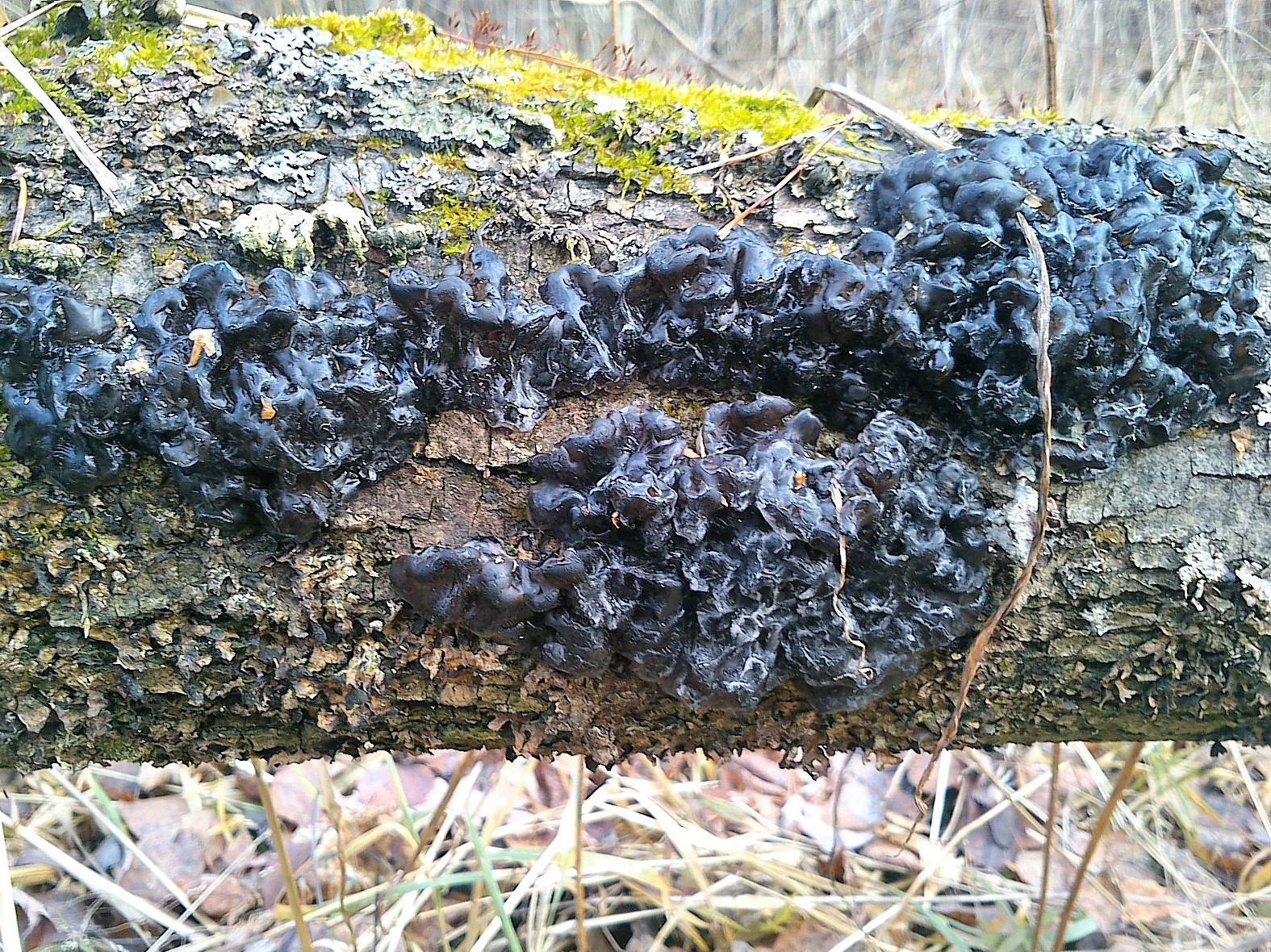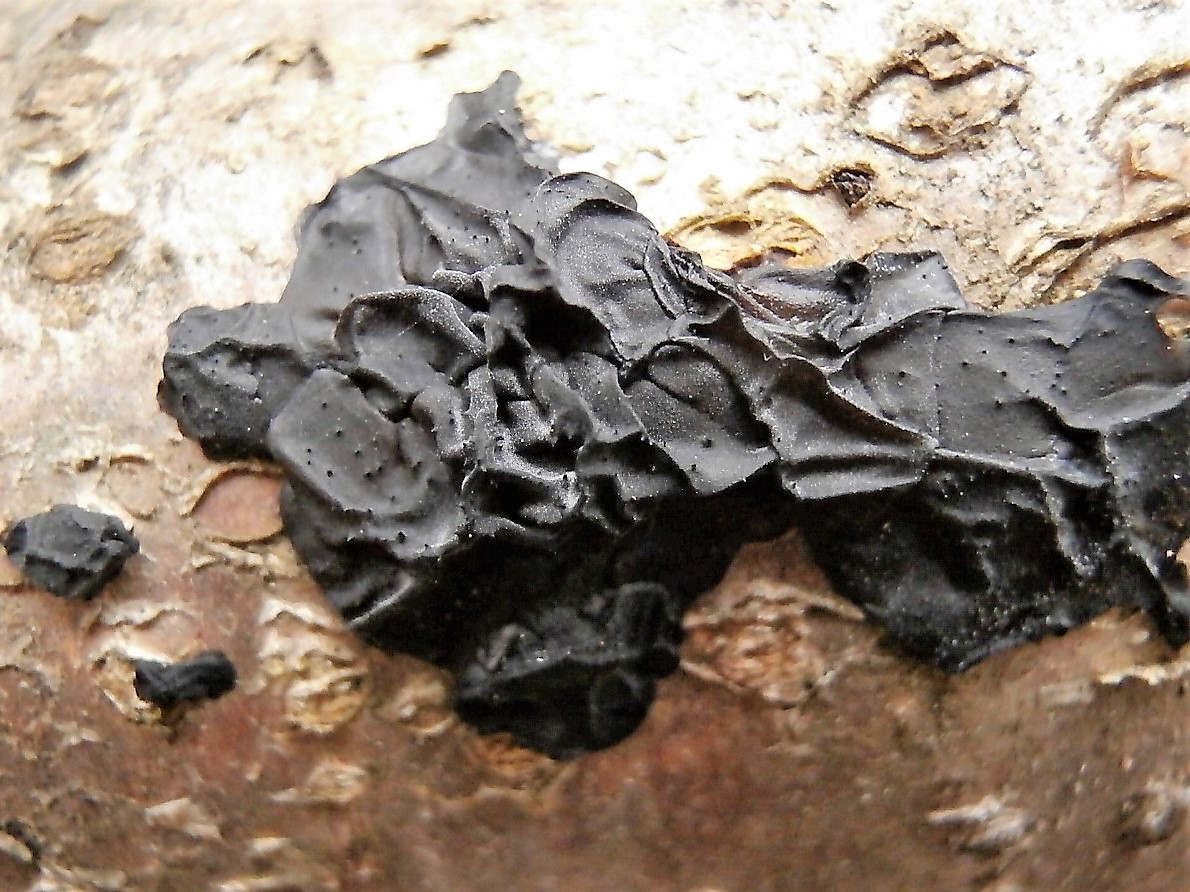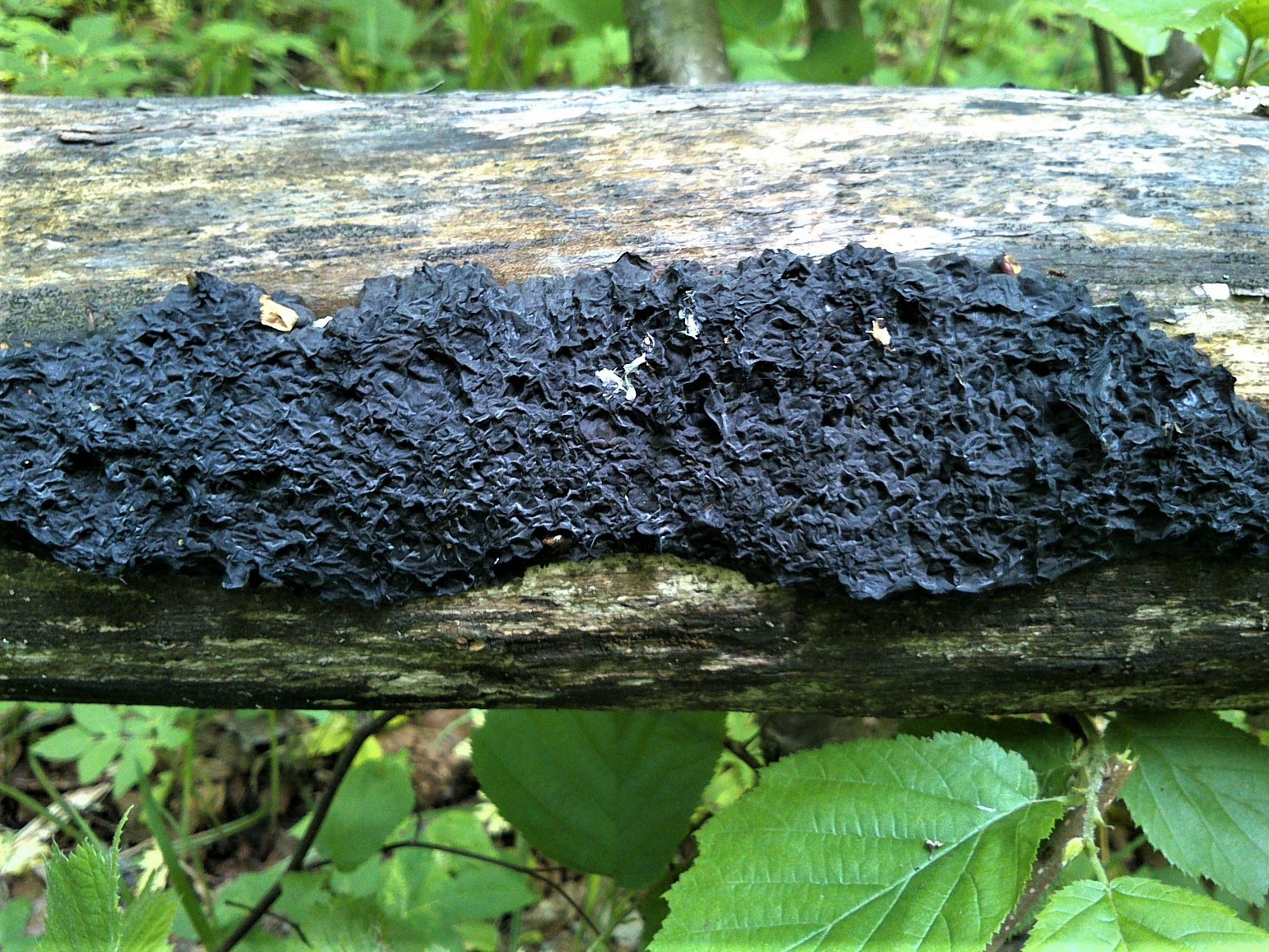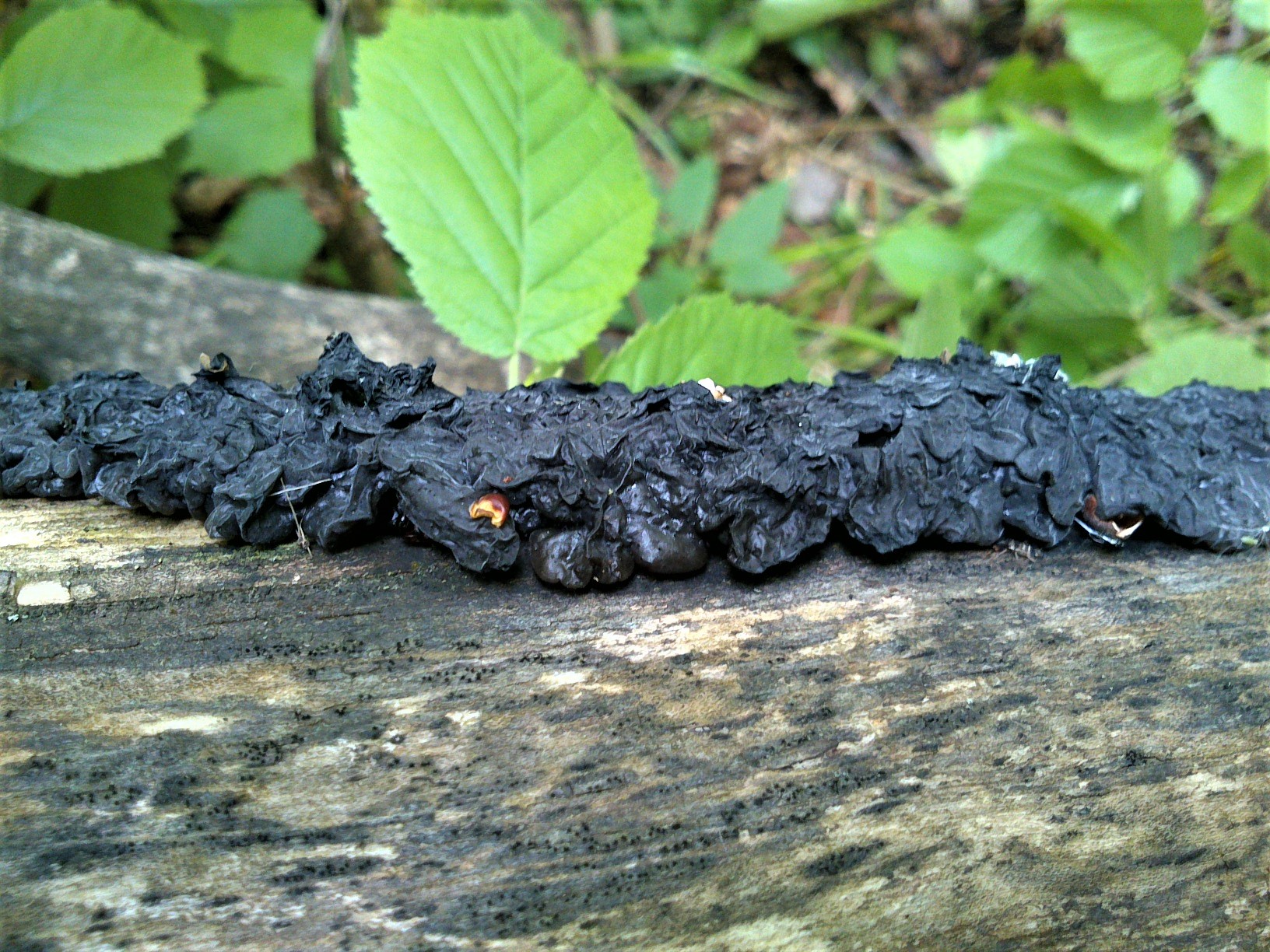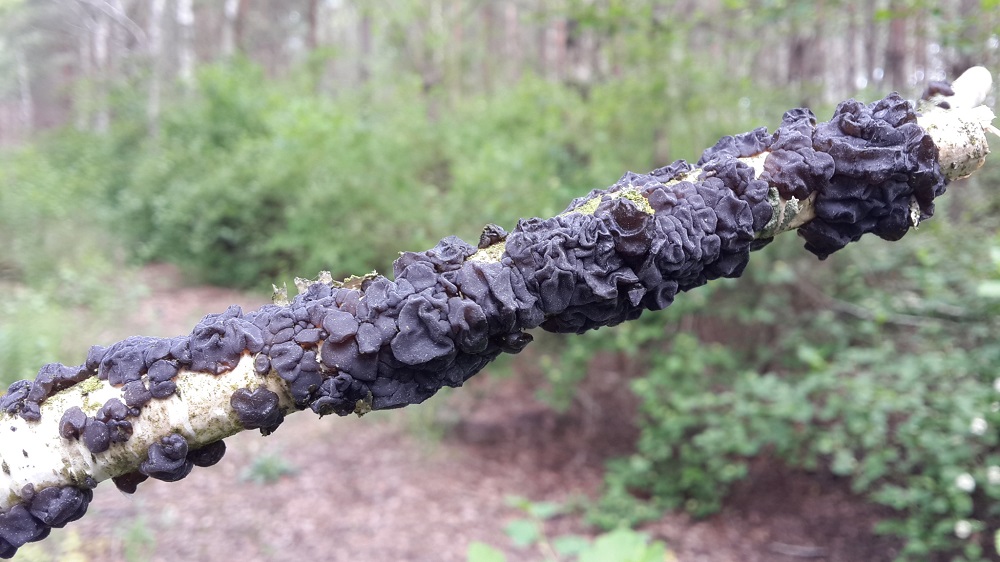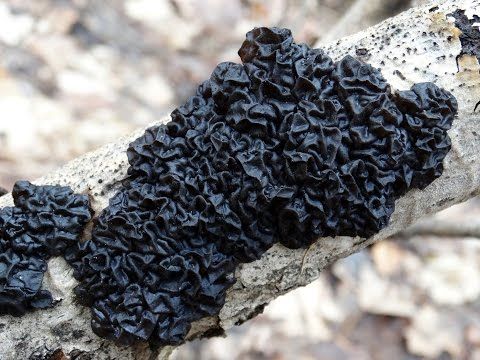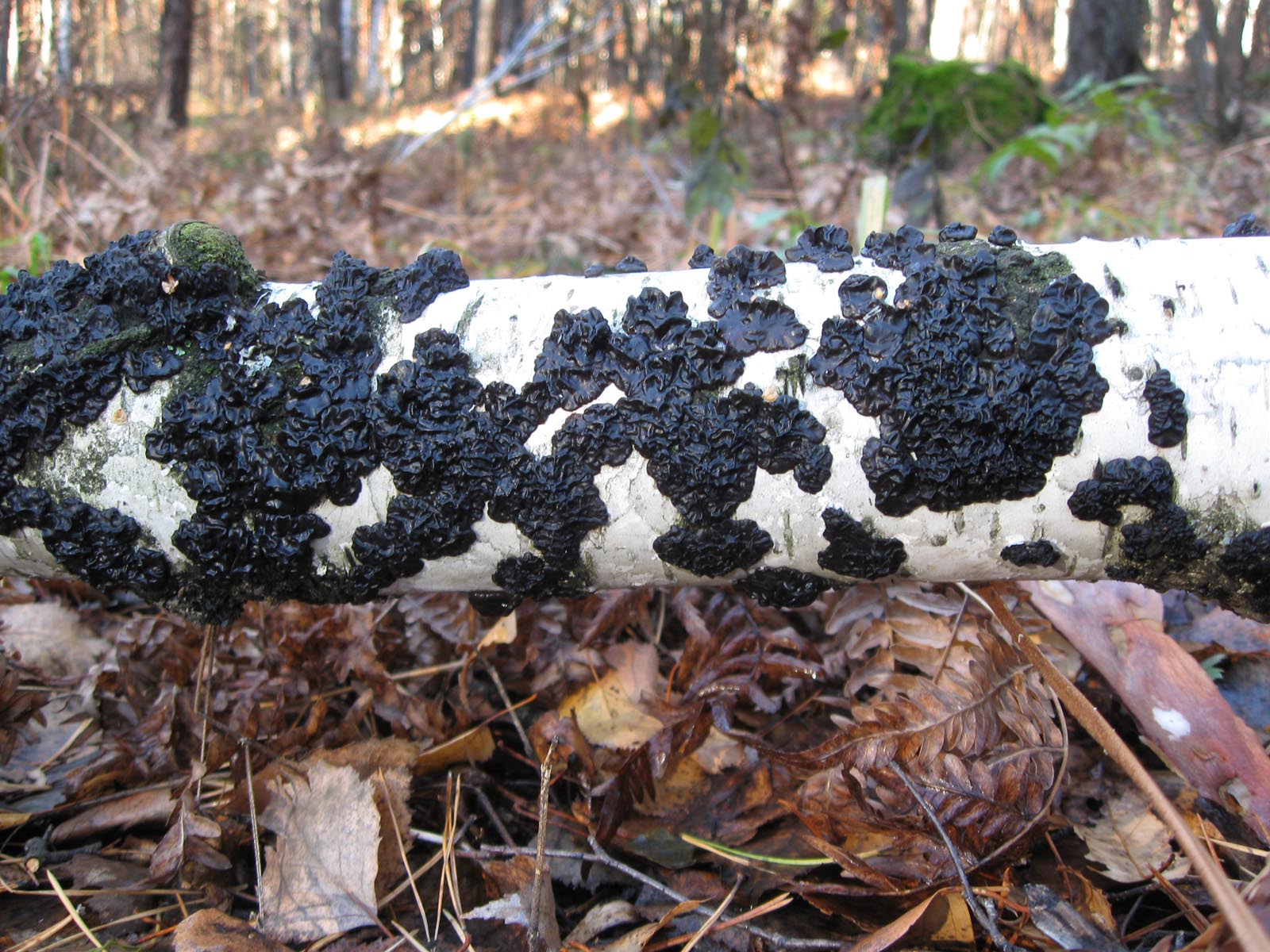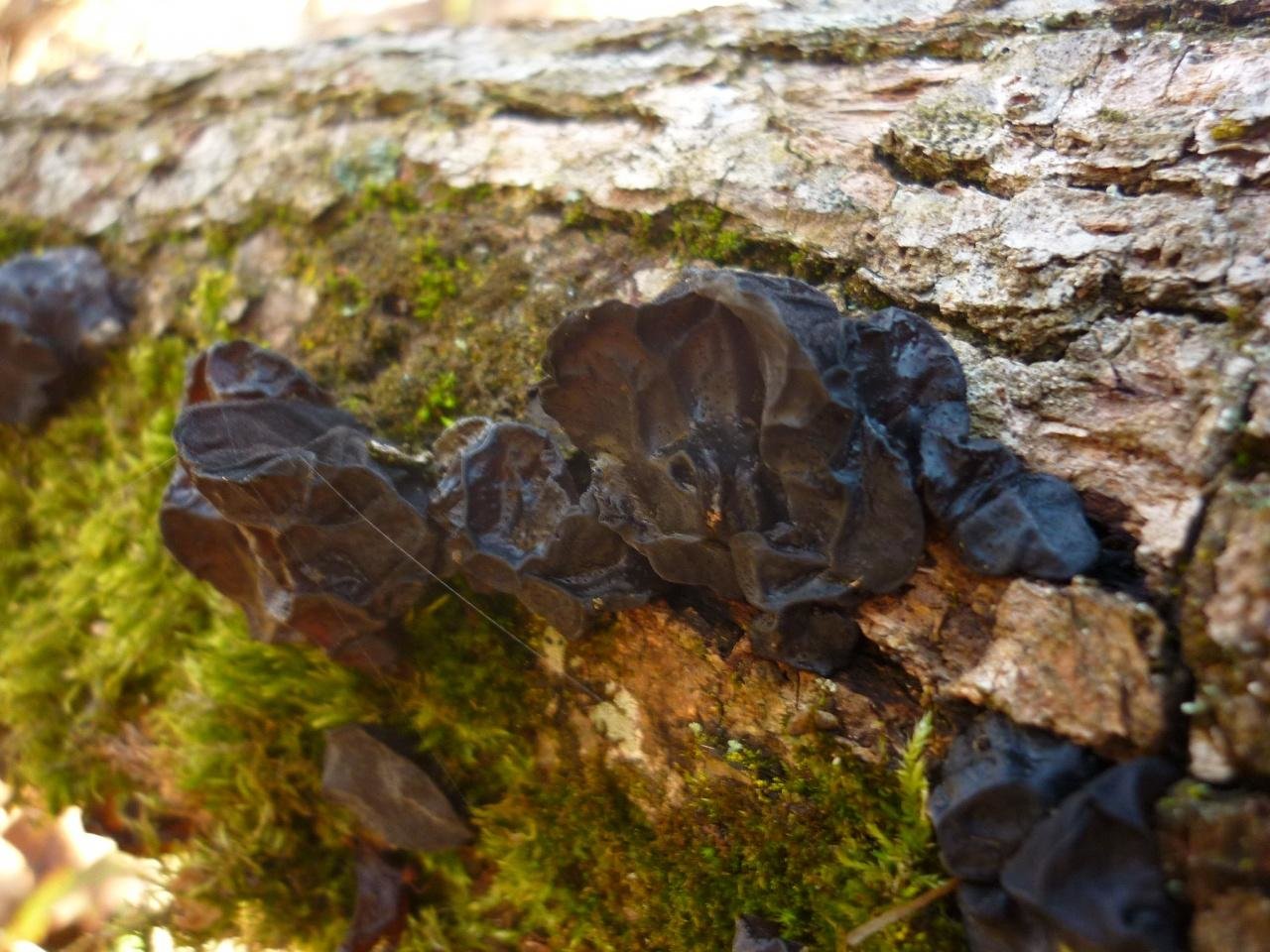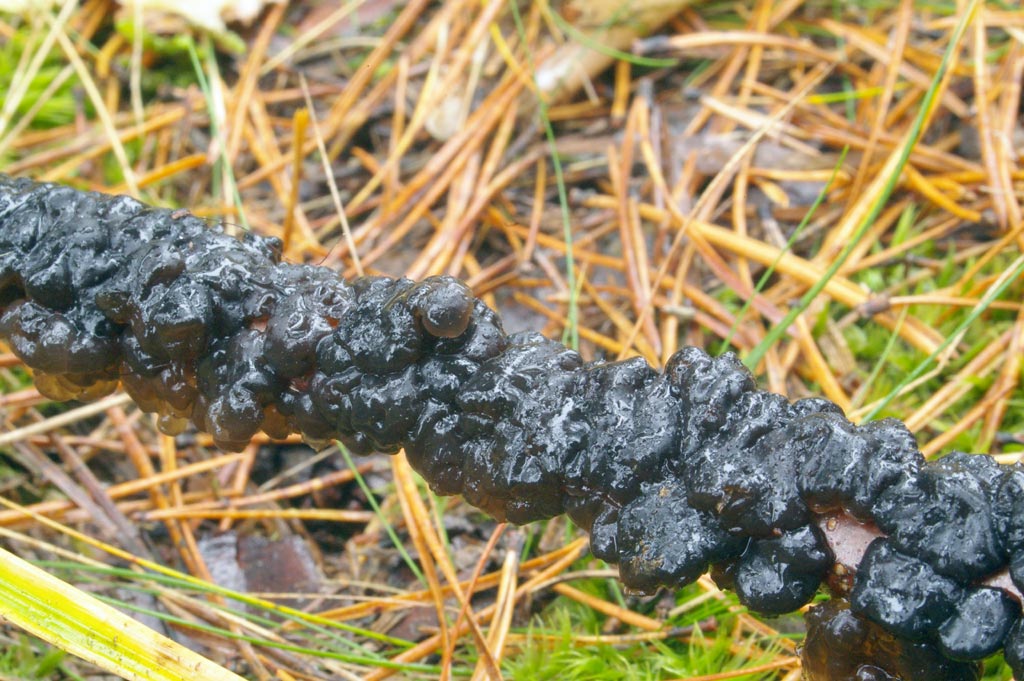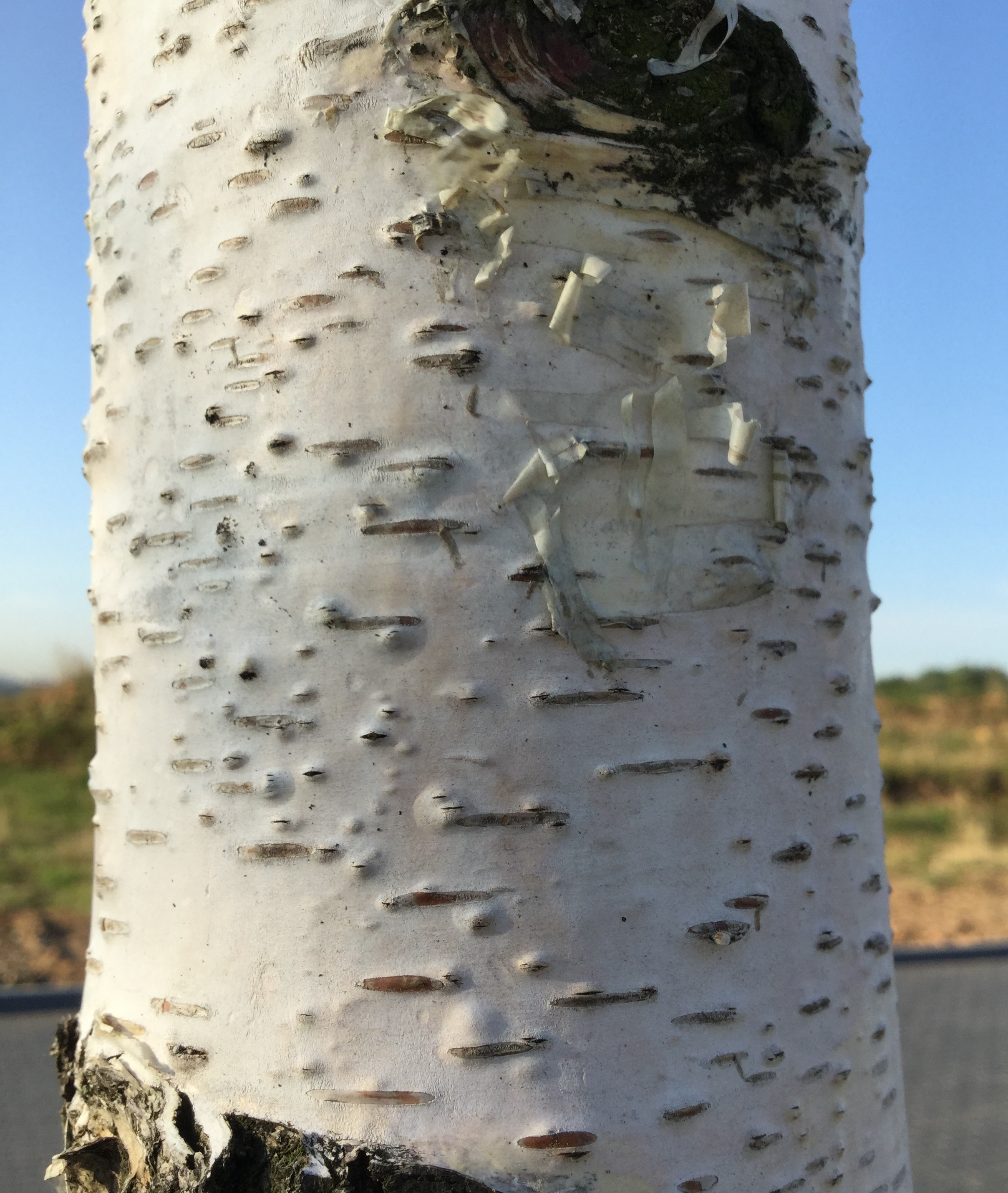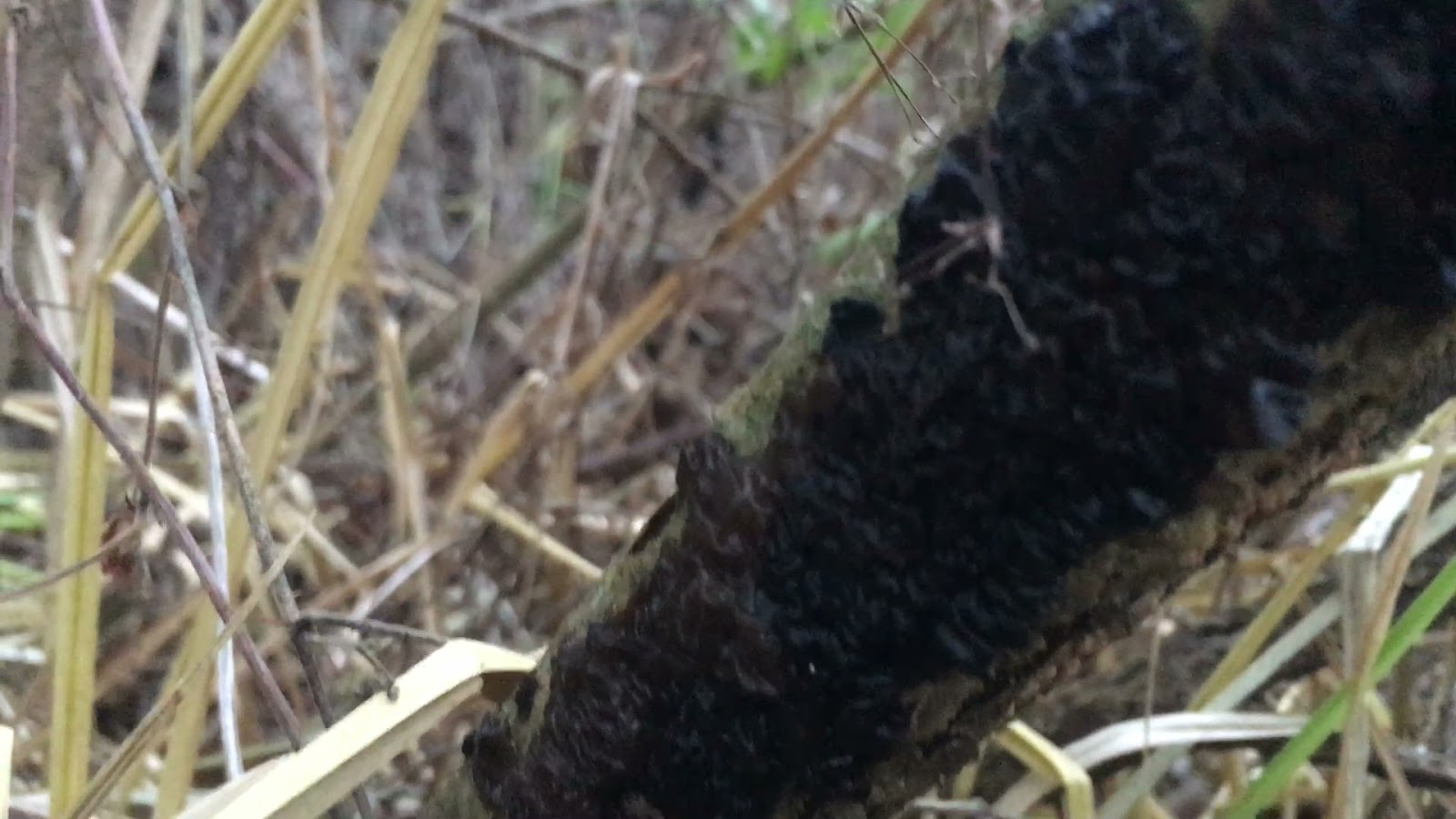Exidia compressed: photo and description
| Name: | Exidia compressed |
| Latin name: | Exidia recisa |
| Type of: | Inedible |
| Synonyms: | Tremella recisa, Tremella salicus |
| Specifications: |
|
| Systematics: |
|
Compressed exidia is a poorly studied mushroom, which, perhaps, only avid mushroom pickers know about. What are these gifts of the forest, it is worth finding out before the start of the "quiet hunt".
What does Exidia look like
The mushroom resembles a closed shell with a barely noticeable stem 2-3 cm long. The fruit body is erect, rounded, leaf-shaped, compact, disc-shaped, or in the form of an inverted cone. As a rule, the surface of a young exidium is compressed smooth, but over time it becomes folded and wrinkled.
Color - from yellow and amber shades to red-brown, and when dry, the pulp begins to turn black. The edge of the fruiting body is wavy-wrinkled. It is characterized by an expressionless taste and smell.
Basidia are tetrasporous with a buckle at the base and long cylindrical sterigmas, reaching sizes of 10-13 × 7-10 microns. Spores 12-14 × 3-4 μm, thin-walled, hyaline, allantoid with a pronounced apex.
Is the mushroom edible or not
Mushrooms of this genus have several varieties, some of which are edible. However, this specimen belongs to the group of inedibles, but is not considered poisonous.
Where and how it grows
You can meet this species on dead deciduous wood that grows along rivers and lakes.
The variety is widespread throughout Russia, and the favorable time for their growth is from July to September. However, in some parts of the country with a mild climate, this specimen continues to grow continuously.
For example, in the southern region of Russia, where frosts reach a maximum of -10 degrees in winter, fungi do not die. And at above-zero temperatures, they continue to develop and form spores. In those regions where winters are more severe, for example, in the European part, exsidia winters successfully and begins to grow immediately after the thaw.
In dry weather, the fruit bodies dry out, acquiring a black tint, turning into hard thin crusts, the viability of which is several years in herbarium conditions. However, with heavy rain, the mushrooms return to their original form.
Doubles and their differences
There are several types of mushrooms that are considered twins of the Compressed Exidia:
- Exidium glandular - resembles compressed in shape and color. Nevertheless, the glandular has a more saturated black color, and small warts can be seen on the surface of the fruiting body. This doppelgänger is believed to be an edible and delicious mushroom.
- Truncated exidia - similar in color and shape. You can distinguish a double from a real one by the presence of a lower velvety surface and small warts on its fruiting body. They are classified as inedible.
- Exidia blossoming - has a similar color and rounded flattened fruiting bodies. However, it will not be so difficult to distinguish a twin from a compressed exsidium, since most often it grows on a birch. This variety is never found on willow. It is an inedible species.
- Leafy shiver - similar in shape and color to fruit bodies, but this species is quite rare and grows on stumps. Experts classify it as inedible and do not recommend using it for food.
Exidia blackening
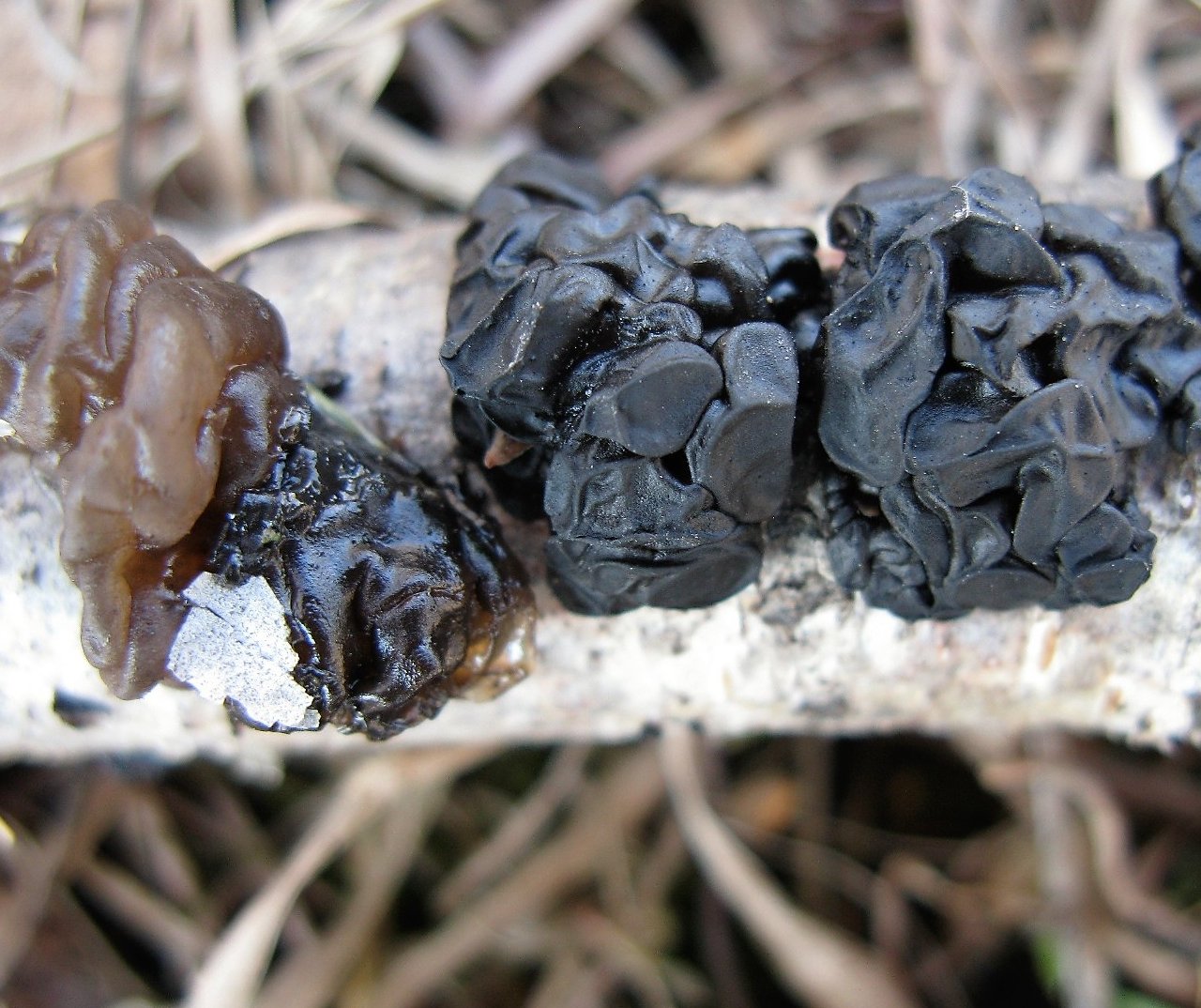
Exidia nigricans (With.)
Description
Fruit body: 1-3 cm in diameter, black or black-brown, at first rounded, then fruiting bodies merge into one lumpy medullary mass, extending up to 20 cm, adherent to the substrate.The surface is shiny, smooth or wavy-wrinkled, covered with small dots. When dry, they become hard and turn into a black crust covering the substrate. After rains, they can swell again.
Flesh: dark, transparent, gelatinous.
Spore powder: white. The spores are elongated, 12-16 x 4-5.5 microns.
Taste: negligible. Smell: neutral.
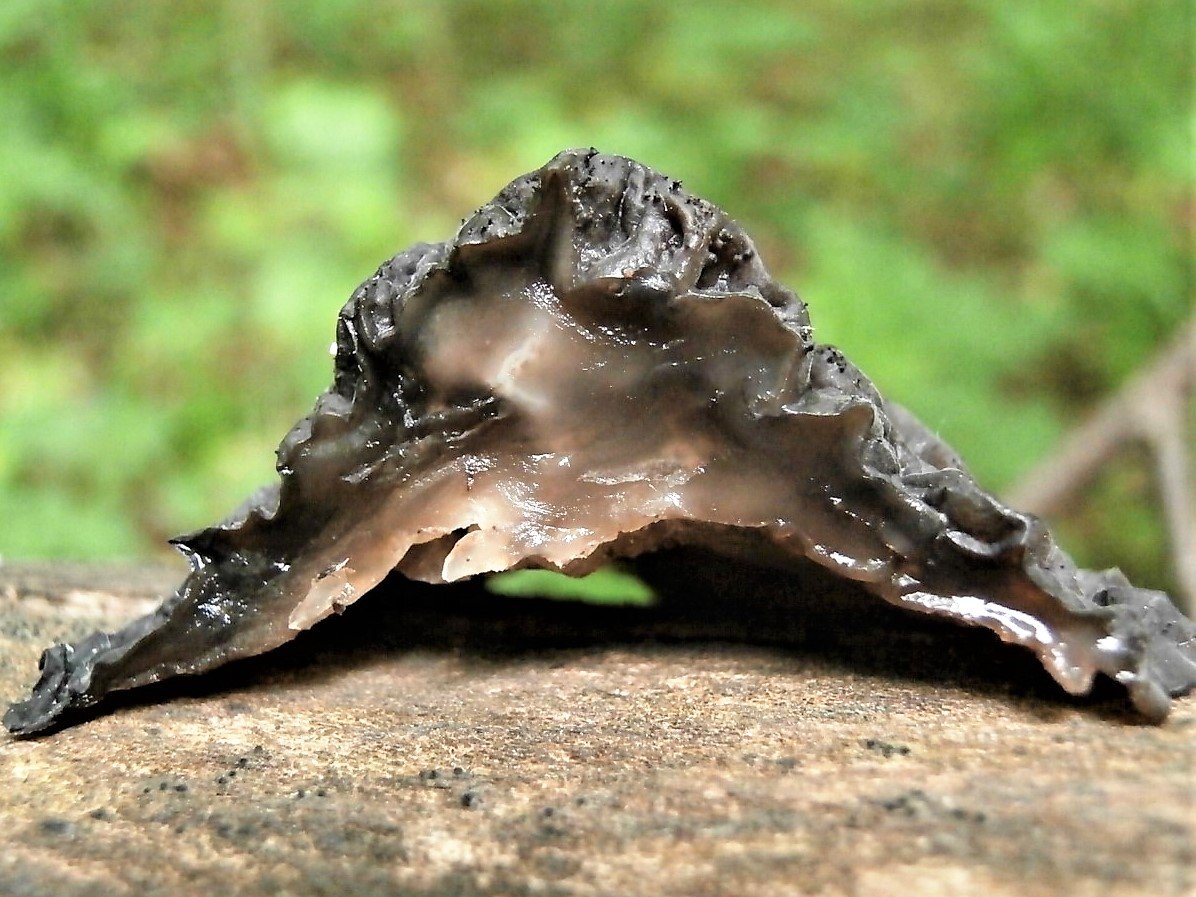
It appears in spring in April-May and grows until late autumn under favorable conditions.

Similar species
Exidia spruce (Exidia pithya) - grows on conifers, fruit bodies are smooth. Some mycologists believe that spruce exsidia and blackening exsidia are one species.
Exidia ferruginous (Exidia glandulosa) - grows only on broad-leaved species (oak, beech, hazel). Fruit bodies never merge into a common mass. The spores of the glandular exidia are slightly larger.

Is the mushroom edible or not
The specimen is considered inedible, but it is not considered poisonous either. Due to the lack of smell and taste, it is not a valuable food product.
Where and how it grows
Exidia grows black on dry branches or trunks of deciduous trees, covering a large area. It can be found in the forests of Western Siberia. Fruiting begins in April and lasts until late autumn.

Doubles and their differences
Exidia compressed, like any representative of the mushroom kingdom, has its counterparts:
- Spruce trembling. Grows on dried conifers. The cushion fruit body is formed by a dense gelatinous mass, black with an olive tint. The surface is smooth and shiny, hardens and forms a crust during dry periods. It can be found in all coniferous forests of Russia.
- The trembling is glandular. It grows on dried wood of beech, oak, aspen and hazel. The fruit body has a jelly-like consistency; during mass growth, they never grow together. The shiny olive, brown or bluish surface hardens and becomes dull in dry weather. The pulp is thin, firm, without mushroom taste and smell. Considered conditionally edible. It can be eaten raw when preparing salads and dried when cooking soups.
Conclusion
Exidia blackening is a beautiful representative of the mushroom kingdom. The jelly-like pulp is colored shiny, black. Prefers to grow on dry trunks of deciduous trees. In Russia, the mushroom is considered inedible, but in China a variety of dishes are prepared from it.
Exidia
Exidia glandular Exidia compressed
Exidia is a widespread species of the large Auriculariaceae family; these mushrooms grow in Russian forests almost everywhere. They have a pulp similar to dense jelly and an indefinite shape of fruit chalk. They have a characteristic feature, they dry out in heat / drought, in cool rainy seasons they swell again and grow actively. Therefore, they become noticeable only in autumn and spring, although they can appear in cold, damp summers. In our region, two species are often found, both prefer alder-willow thickets, I have tasted (raw!) No taste at all!
Exidia glandular (Exidia glandulos)
Exidia glandular on birch
It is sometimes called glandular tremor. Actually, it does not look like mushrooms at all, fruiting bodies are born in the form of shapeless dense gelatinous tubercles densely adhered to wood. Growing up, as a rule, they merge into irregularly rounded or elongated blotches with clearly defined edges. The surface is glossy with numerous winding folds and peculiar rounded mini outgrowths (lat. Carrier glands).
Elastic flesh, odorless and absolutely tasteless. Colors of all shades of brown and black. Spores form over the entire surface of the fruiting bodies; therefore, drying mushrooms are often covered with a whitish spore powder. They grow on fallen trunks and thick branches of deciduous trees. Drying, they turn into a thin smoothed crust. Exidia glandular is edible and they write that it even has medicinal properties. Only eat raw!
Exidia compressed (Exidia recisa)
In Latin, "recisa" stands for abbreviation
Exidia compressed on aspen
Compressed exsidia mushrooms are compact, small (1 - 2.5 cm).Fruit bodies are rounded, wrinkled, with uneven edges and tiny, barely noticeable legs or a narrowed base. The outer surface is matt, the inner spore-forming is smooth and shiny. mobile pulp is translucent, thin, without any taste or smell. The color of the fruit bodies is brownish-yellow, orange-brown or reddish-brown, usually grows in small families, but usually does not form intergrowths. When dried, compressed significantly decreases in size, shrinks, becoming a dull dark brown color. Grows on decaying deciduous trees / branches, preferring willow trees. These nondescript woody mushrooms have hardly been studied, so their edibility is not known. Poisonous species are not described among exsidia, they are simply not edible due to their small size, unappetizing appearance and hard gelatinous pulp.
Views
- Exidia compressed (Exidia recisa) synonyms: Tremella recisa or Tremella salicus
- Exidia glandulosa synonym: Exidia truncata
- Exidia cartilaginous (Exidia cartilaginea) synonym: Exidia fragilis
- Exidia blackening (Exidia nigricans) synonyms: Exidia plana, Auricularia nigrescens, Auricularia polytricha, Exidia polytricha
- Exidia sugar (Exidia saccharina)
- Exidia thuretiana synonyms: Tremella thuretiana, Tremella albida, Exidia albida, Tremella cerebrina, Tremella hyalina, White Brain
- Exidia willow (Exidia iteinos)
- (Exidia pusilla)
- Fir exidia (Exidia pithya)
- Exidia novozealandica
- Japanese exidia (Exidia japonica) belongs to the Auriculariaceae family, genus Tremellochaete
- (Exidia alveolata)
- (Exidia aeruginosa)
- Exidia or Tremella vesicular, pearly (Exidia nucleata, Myxarium nucleatum) or Criystal Brain belongs to the family Hyaloriaceae, genus Myxarium
- (Exidia alba) synonym Ductifera pululahuana
- (Exidia compacta)
- (Exidia badioumbrina)
- Exidia brownish (Exidia brunneola)
- (Exidia uvapassa)
- Exidia blossoming (Exidia repanda)
- (Exidia villosa)
- (Exidia umbrinella)
- (Exidia zelleri)
- (Exidia vitrea)
- (Exidia tucumanensis)
- (Exidia tomentosa)
- (Exidia testacea)
- (Exidia pergamena)
- (Exidia parvula)
- (Exidia panamensis)
- (Exidia intumescens)
- (Exidia lagunensis)
- (Exidia lutea)
- (Exidia maracensis)
- (Exidia maya)
- Exidia Mexican (Exidia mexicana)
- (Exidia cystidiata)
- (Exidia fulva)
- (Exidia cokeri)
- (Exidia antiguae)
- (Exidia ambipapillata)
- 2009-01-10 Exidia thuretiana 2 cropped.jpg
Exidia prison
- Exidia nigricans, Witches', butter, UK.JPG
Exidia blackening
- Exidia alba 87984.jpg
Exidia alba
- Exidia saccharina 73251 MushroomObserver cropped.jpg
Exidia sugar
- Abgestutzter Drüsling Exidia glandulosa Exidia truncata.jpg
Exidia glandular
- Exidia recisa 34873 cropped.jpg
Exidia compressed
APK "Vitus" - News
Birch dropsy (Erwinia multivora.)
In recent years, active foci of a poorly studied disease - bacterial dropsy of birch (Erwinia multivora Scz.-Parf.), Have been identified on the territory of the Russian Federation.
Cytosporosis of birch (Cytospora horr> Posted on 21.01.2020 by the author of APK
The causative agent is the mushroom Cytospora horrida Sacc. (marsupial stage - Valsa horrida Nits.), causes necrosis of the bark, drying out of individual branches and whole trees.
Exidia sugar (Ex> Published on 21.01.2020 by the author of APK
Head of the plant protection laboratory of AIC "Vitus" Sinelnikov K. Yu.
Specialists of the plant protection department of AIC "Vitus" carry out entomological and phytopathological examination of green spaces, develop individual plans for plant protection measures, treat green spaces with protective agents and carry out complex plant care.
Exidia truncated
It is located on trunks with thin bark and large tree branches.
Photo: Mina acacia tail-bearing moth
Alder lurker - Cryptorrhynch> Posted on 16.12.2019 by the author of APK
a - an adult; b - an adult from the side; c - damage to the trunk with a larva; d - signs of damage to young alder; e - signs of a previous lesion on alder.
Dark-colored weevil, 6-9 mm long. The body is covered with dark brown, almost black scales with very short bristles. The shield is covered with white scales on the sides. The prothorax has a deep groove between the thighs, in which the rostrum is located. The larva is white with a brown head, legless, 10-12 mm long.
Willow diplodine necrosis (Diplodina microsperma)
Diplodine necrosis of willow trunks and branches (causative agent - the fungus Diplodina microsperma).
Photo: Sinelnikova K.Yu.
Synonyms: - Plagiostoma salicellum; - Septomyxa picea; - Cpyptodiaporthe salicella;
Diplodine necrosis of willow trunks and branches (causative agent - the fungus Diplodina microsperma) is a widespread and dangerous, but poorly understood disease. Continue reading →
Black spot of willow (Rhytisma salicinum)
Xyloma salicinum Pers., Neues Mag. Bot. 1: 85 (1794) Xyloma leucocreas DC., In Lamarck & de Candolle, Fl. franc., Edn 3 (Paris) 2: 303 (1805) Melasmia salicina Lev., in Tulasne & Tulasne, Select. fung. carpol. (Paris) 3: 119 (1865)
Other names: black spot of willow, resinous spot of willow,
The causative agent of the disease is the marsupial mushroom Rhytisma salicinum, which forms black convex shiny spots on the leaves, up to 1.5 cm in diameter.








